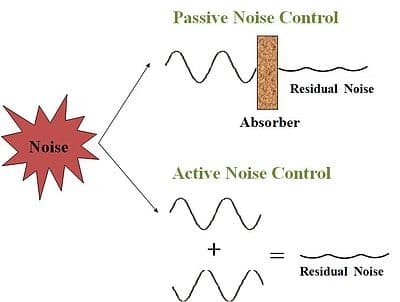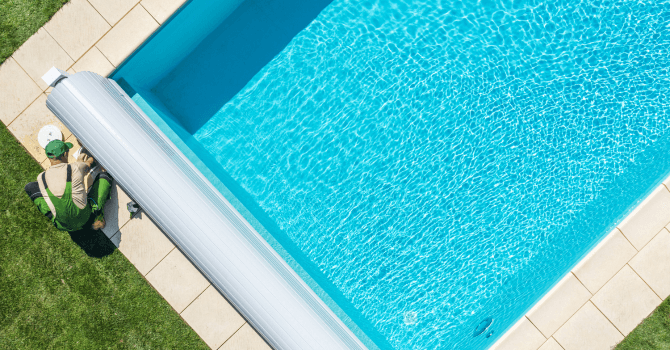
Are you an aspiring musician looking to record your first album in your very own studio? Or maybe you work from home alongside some fairly rambunctious children that can't seem to keep it down during work hours? Whatever the case, if you're looking to make a space quieter, there are various ways to soundproof a room or section of your home.
There are many highly effective materials that can be used in a home soundproofing project to minimize or block sound. However, different noise frequencies and different transmissions call for different materials! It might seem complicated now, but RenoQuotes.com is here to break it down, and make your next soundproofing project a walk in the park!
Here are the 10 Best Materials to Soundproof a Room!
1) Drywall

source: Flickr, Jan Tik
Drywall can be referred to as wallboard, plasterboard as well as gypsum board. Sheetrock is an excellent and inexpensive type of drywall that is often used as a soundproofing material. Damped drywall is another great option if you’re hoping to build that den for your band to practice in! This type of drywall incorporates a damping layer. These panels are built specifically for soundproofing, and thus, will be more effective than regular drywall.
2) Soundboard or Acoustical Board
This type of soundproofing material is most effective on floors as an additional layer and is unfortunately not the best for walls as it has a low mass. As you are trying to stop vibrations from getting through your walls and ceilings, your soundproofing material needs to prevent them from travelling (conduct) by blocking solid pathways.
Materials with a high mass are part of an effective strategy for reducing sound transmissions. Unfortunately, the soundboard does not provide damping, decoupling or absorption. However, it is relatively low cost and widely available, making it a popular choice for home soundproofing projects.
3) Mass-Loaded Vinyl
This a highly dense, flexible membrane that is a great source of mass but relatively expensive. This material is good for filling gaps, as well as wrapping ducts or pipes where a flexible sound barrier is necessary. As a soundproofing material for walls, floors or ceilings, this can work however, there are many alternatives that are more effective and cheaper than mass-loaded Vinyl.
4) Insulation
Loosely packed fibreglass provides a flawless absorption of sound, which is only one of the many aspects of soundproofing and a minor one at that. Insulation acts to absorb resonating air, which creates vibrations that can carry noise through your walls to your neighbours. Standard fibreglass insulation is effective and will not cost you a pretty penny. You can use other insulation materials such as cellulose, mineral wool or recycled cotton. The trick is to keep density low, so don't compress or pack them when they are used.
5) Sound Curtains
While it’s common to tack ordinary curtains and blankets onto the walls of one’s home to attempt to soundproof a room, this method is hardly effective and does not control the absorption of sound. However, there exists a curtain specifically designed for soundproofing. Aptly named a sound curtain, this product is designed to control industrial noise and is made of a quilted fibreglass or rock wool layer alongside mass loaded vinyl.
Sound curtains are obviously stiffer and heavier than a normal curtain and are hung on large frames to make them easy to surround a particular area or piece of equipment. However, when used in a home, they are meant to improve the sound within a room by reducing echo as opposed to blocking sound from leaving.
6) Sound Damping Compound

source: Wikimedia Commons
A viscoelastic adhesive, or dampening compound, can be used as an interior layer between layers of drywall, plywood or subflooring to provide soundproofing properties to a space. The adhesive comes in a caulking style dispense tube, and can therefore also be used to seal holes, seams and gaps in walls, ceilings or open spaces.
This compound is both highly effective and economical. Also, getting into the science behind soundproofing, this is one of the few ways to address low-frequency noise, such as bass, from music, home theatre or machinery. However, not all brands of this material provide a similar dampening capability so make sure to check out the brand data tests before moving forward with a purchase.
7) Acoustical Sealant
This product is sometimes referred to as acoustical caulk. This is important for working in tandem with other soundproofing materials, as it helps to effectively seal off other soundproofing components. Without an acoustical sealant, the activity of other soundproofing materials will vary greatly, as noise can find its way through even the tiniest of cracks. This material is similar to a sound dampening compound, but can also be used alongside it in order to double their effectiveness!
8) Soundproofing Foam

source: Pixabay, Anyusha
Foam is arguably the cheapest of soundproofing materials, and acoustic foam is a specially formed sheet that is designed to deflect, dampen and absorb sound. Foam is commonly used in studios, as well as for at home DIY soundproofing projects. Foam panels can be installed into your wall, where noise reflection may be an issue.
An alternative is using foam panels as ceiling tiles to cut down echo and reverberation. Unfortunately, foam does not get the best rep amongst sound production communities, as low grade or “egg crate” foam is often sold as a soundproofing material that is highly ineffective. However, acoustic foam panels are designed and tested for sound absorption, so don’t underestimate their abilities!
9) Soundproof Paint
This is one of the many materials used for soundproofing that experts are skeptical of. However, this low-cost product is still manufactured and used in DIY soundproofing projects. Soundproofing paint comes in several varieties and can be found in roller or spray-on form. The paint must be applied in thin layers, so the recommended method of application is spraying, as it will allow for a thicker coat.
As we’ve learned, soundproofing relies on mass to block and absorb sound, and as this is just paint, it will not work as effectively as most of the other soundproofing materials mentioned. However, many manufacturers claim it works for noise reduction so if you’re searching for a low cost, simpler solution, then we’d suggest giving it a try!
10) Pre-built Soundproofing Units
In addition to adding extra elements into your room, there are pre-built units on the market that are specially engineered to be soundproof. These work well and can save time, money and energy trying to make over an entire room. Soundproof windows are constructed of several thick panes of glass, generally with a layer of air trapped in between each pane to prevent sound waves from leaking in and out.
This type of window can be installed directly over top of your existing window by way of spring-loaded frames on tracks. If you live on a main road or in a noisy section of your city, soundproof windows or doors can be a dramatic change, in a positive way!
Get 3 renovation quotes for your soundproofing renovation project
RenoQuotes.com can help you get quotes for your soundproofing renovation project. If you submit your project to us, we’ll put you in contact with 3 qualified professionals. Fill in the form on our homepage (it only takes a few minutes), and you will receive quotes from trusted specialists.
Dial 1-844 828-1588 to speak with one of our customer service representatives
Looking for something else?
Related articles
The latest industry news, interviews, technologies, and resources.

Editorial Team
•15 Nov 2024
Excessive humidity in your garage can affect your health negatively and damage your belongings. Luckily, there are straightforward and efficient methods to fight it.

Editorial Team
•15 Nov 2024
Given our harsh winter, a decent heating system is a must-have to reap the benefits of a warm, comfortable home. However, as you're probably well aware since the day you paid your first utility bill, a cozy dwelling isn’t cheap.

Editorial Team
•07 Nov 2023
With the swimming season around the corner, the only thing you’re probably awaiting is taking that first refreshing dip into a nice, clean pool. But first, you have to open it, which isn't a fun thing to do. Fear not, as this article will guide you through the swiftest and simplest method to open your pool!

Editorial Team
•07 Nov 2023
Softwood doesn’t have the same wood-burning potential as dry wood, which is much better for firewood. As such, it can’t be swapped out under any condition.

Editorial Team
•07 Nov 2023
Often on the blog, we discuss decor and design trends but we usually focus on the home front. This allows our readers to find inspiration to create the perfect layout for their interiors and exteriors. But what about those looking for ideas for their business?